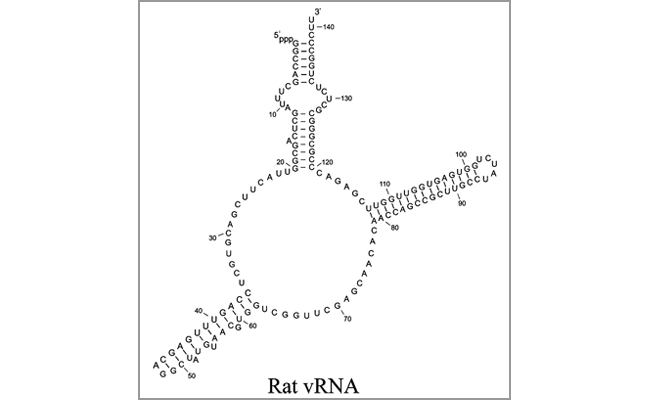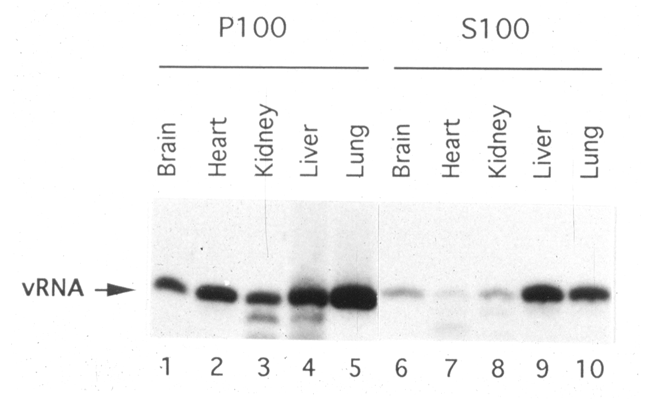Scientists: Vault RNA

The vRNA constitutes 5% of the rat vault particle by mass and is present at ~16 copies per particle. The majority of what is known about the vRNA was obtained under Valerie Kickhoefer's leadership (with excellent collaborators including Deborah Johnson at USC, and more recently Lea Harrington at University of Toronto and the Amgen Institute). The vRNA does not appear to have a structural role, as its digestion with ribonucleases does not alter particle morphology (Kedersha et al., 1990). This suggests that its role is functional and its association with the vault particle is part of that function (Kickhoefer et al., 1993).
The sequences of the vRNAs from rat, mouse, bullfrog, and human have been determined and found to vary in length and number (see Vault Components). Despite the differences in length, the RNAs can be folded into similar secondary structures, using the program mulfold (Kickhoefer et al., 1993).
Above is one of the predicted secondary structures of the rat vRNA.
The conservation of the predicted secondary structures for RNAs isolated from different species supports the arguement that vRNA is an essential functional component of vaults. Subcellular fractionation studies indicated that all of the MVP is assembled into vaults [i.e., all MVP protein is associated with the microsomal fraction (100,000 xg pellet, P100)]. In contrast, examination of the vRNA revealed that a significant portion is not associated with the vault particle (S100) suggesting that the vRNA/vault particle interaction is dynamic (Kickhoefer et al., 1993).
The figure above shows the vRNA distribution in various tissues of the rat. Notice the relative amount of vRNA varies between tissues (lung and liver are highest). In addition, the distribution between vault-associated vRNA (P100) and non-vault-associated vRNA (S100) varies from tissue to tissue.
Micrococcal nuclease treatment of purified vaults verses crude microsome extracts indicate that, while the vRNA is completely protected from digestion in the purified sample, the vRNA is not protected in the extracts. These data suggest that vaults are in a more open conformation in vivo and that during purification their structure is modified so that only the closed form is isolated (Kickhoefer unpublished).
